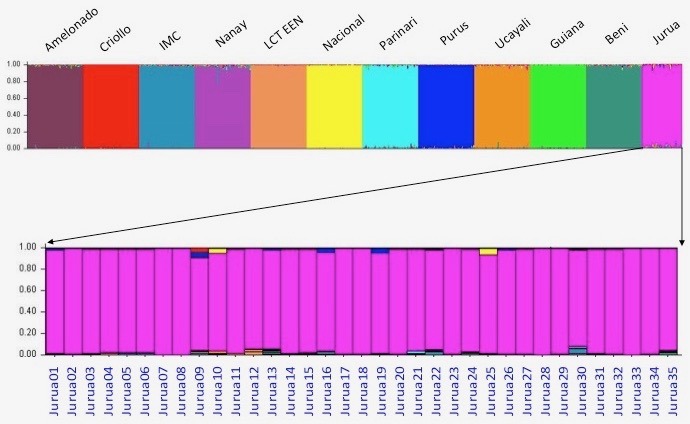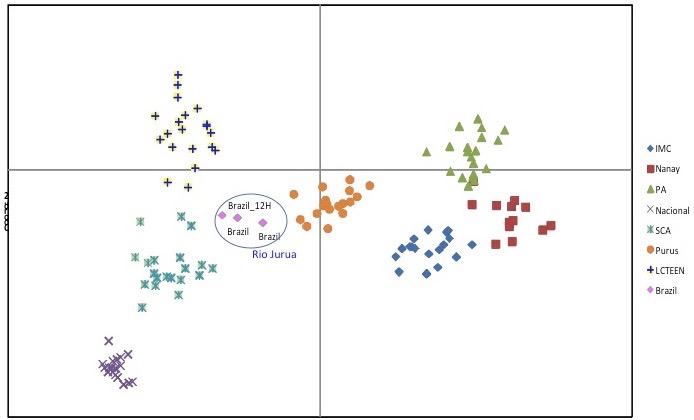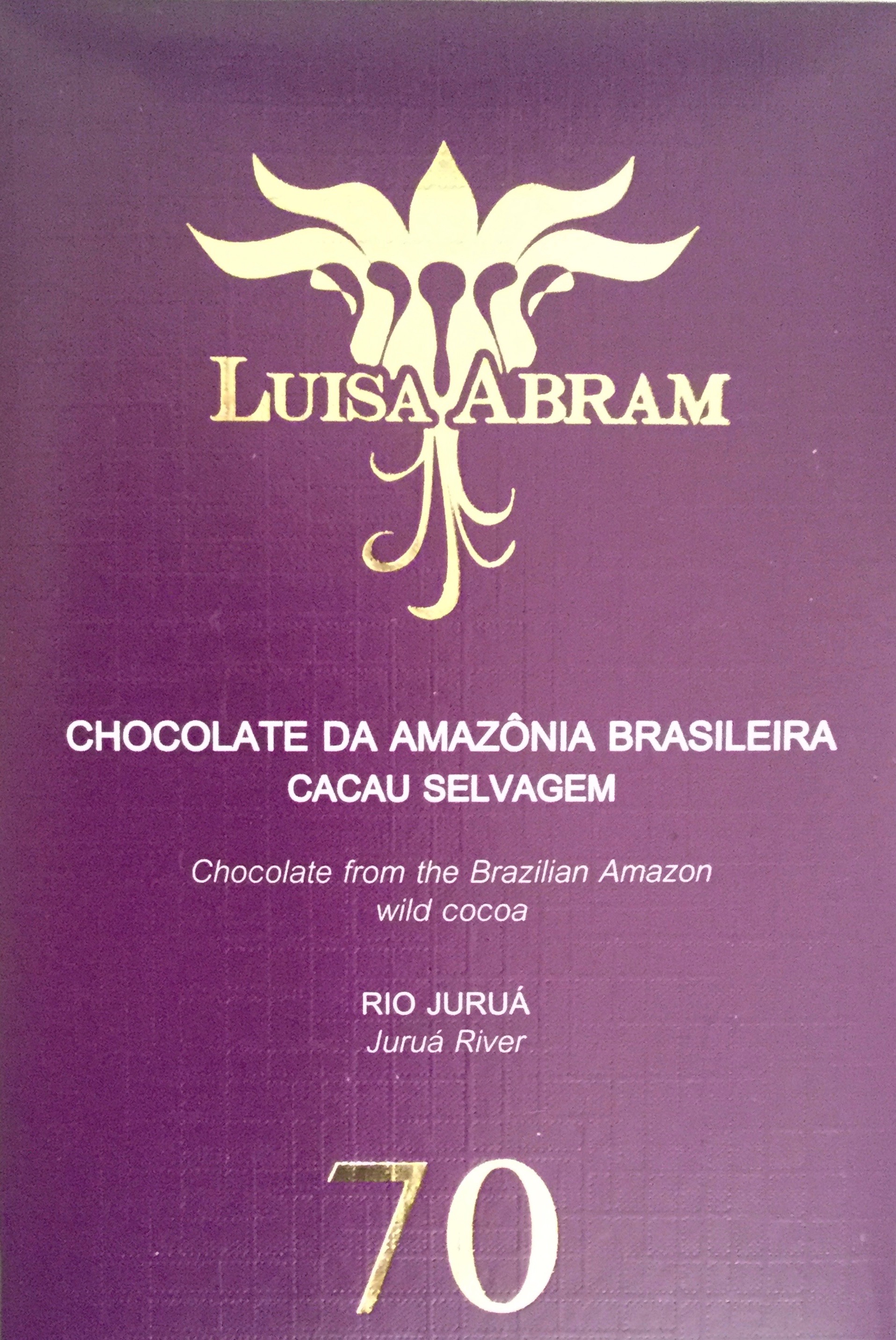| Varietal / genotype | Juruá |
| Grade | Wild Harvested |
| Origin | Rio Juruá, Brazil, Amazonas / Acre, Cruzeiro do Sul region |
| Harvester(s) | Co-op CINTRA |
| Characteristics | Tree Density: condensed in pockets right along the riverbank; a scattering of smaller cacáo trees can be found up to 2km inland Soil: sandy / porous / loose, typical of the Amazon Pod size / shape / shade / scent: small / oblong to round / mainly yellow, some reddish / very aromatic pulp (fresh, sweet & floral; hence, its floral flavor), semi-viscous, limited quantity; tiny seeds a cause of its small pods Seed # / pod: ~40 Weight: Lipid content: 55% – 60% Flavor Profile: Fruits / Flowers Historicity: unique cacáo in the forest of rubber-barons; the area boasts some of the largest cacáos on record; ever since Chandless surveyed the region in 1868 & collected pods from there, Juruá’s cacáo drew comparison & links to that in the Ucayali basin. If related as a genotype, the question remains from which one did it originate. This particular family of cacáo trees resides between Purús and Contamana, both geographically & genetically (natural botany often works like that). They dwell in one of the most pleasant stretches of Amazônia at the river head often topped but not shrouded in mist & so few mosquitos. Rios Purús & Jurua start in Peru. The former slides to the the Madre de Dios basin & the latter towards Uyacali. A ridge in the Fitzcarraldo Arch separates their valleys which might account for the genetic drift from each other. |
| Landmarked | 2018 |







